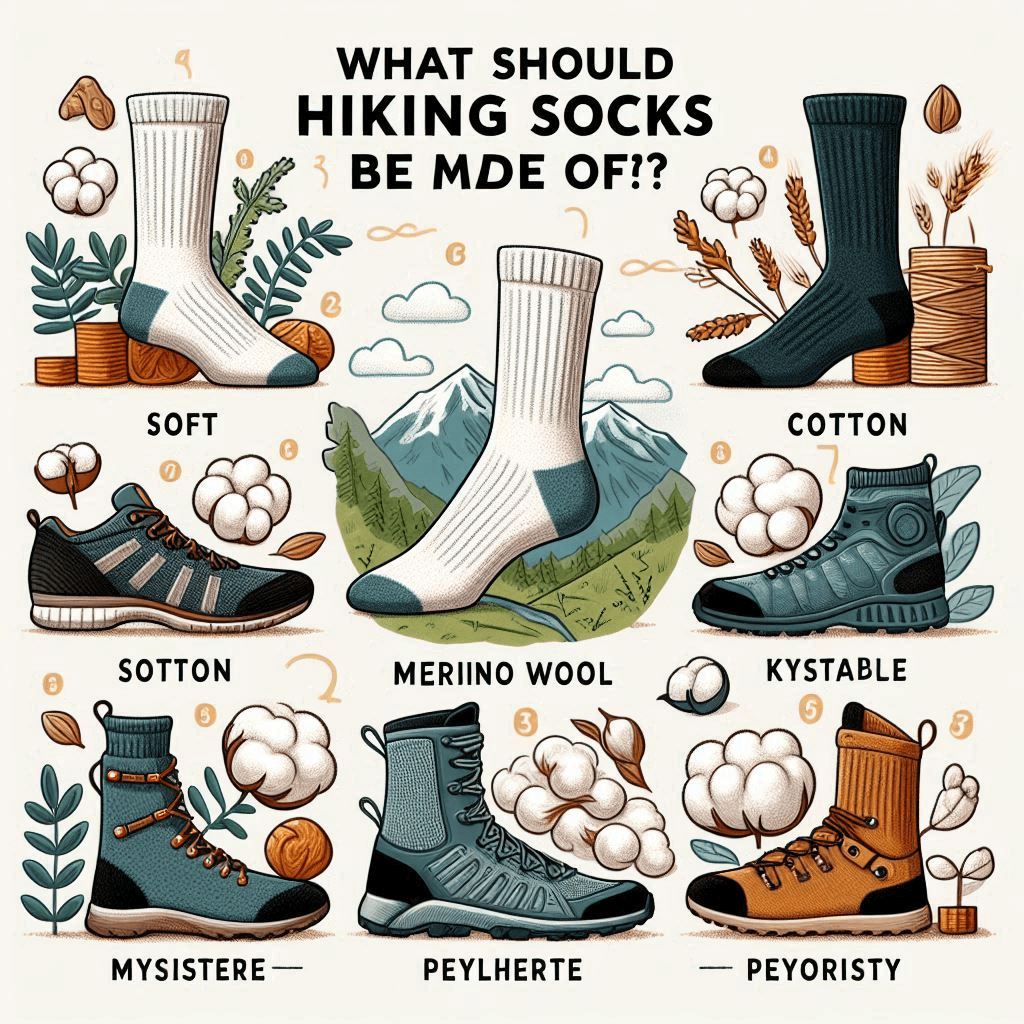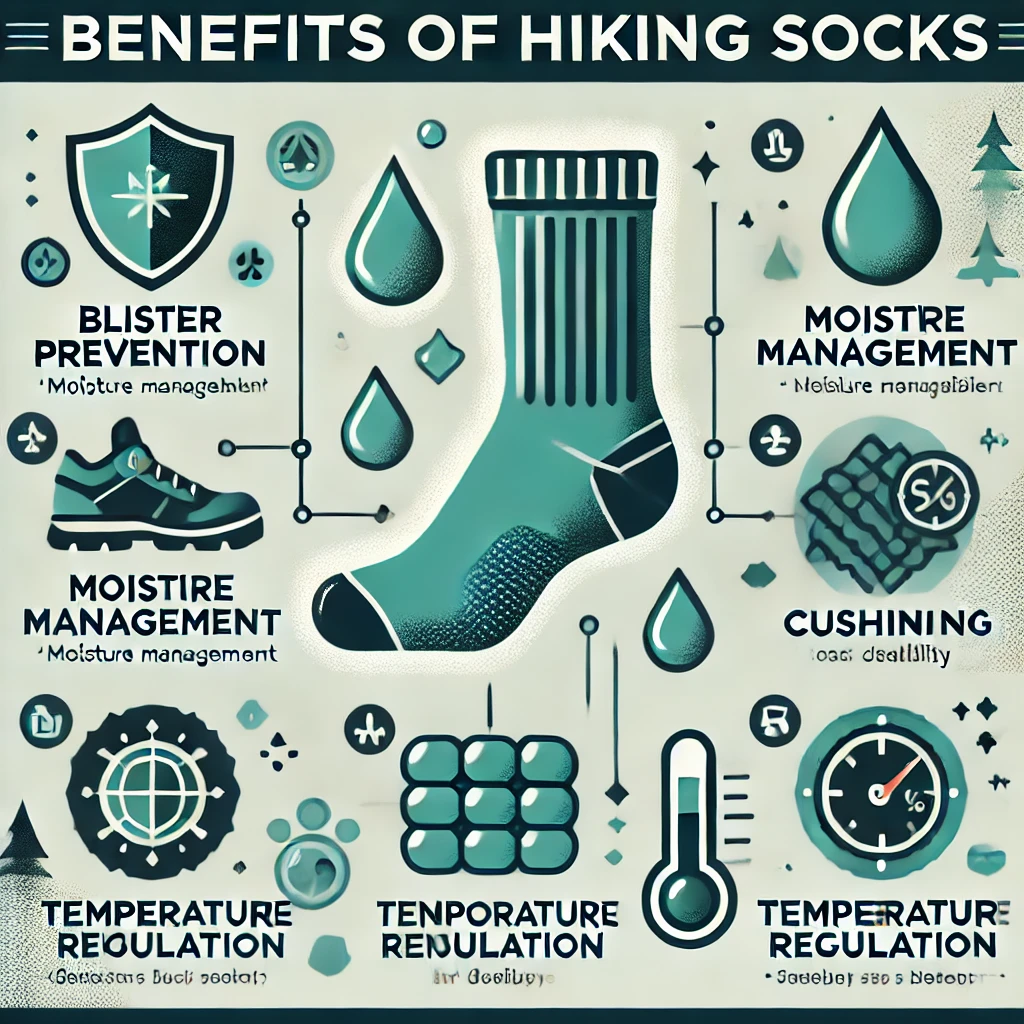Why Do You Need Hiking Socks? A Guide to Comfort and Adventure

If you're anything like me, you've probably wondered at some point, "Are hiking socks really necessary?" It’s a fair question, especially when you already have a pair of trusty sneakers and plenty of everyday socks in your drawer. But let me tell you, once you’ve experienced a long hike with the right socks, you’ll never go back to using your regular ones. Hiking socks are not just another piece of gear—they can make or break your day on the trail. Let’s dive into why they’re so important, what makes them different, and how to make the best choice for your feet.
Why Do You Need Socks for Hiking?
First things first, do you need special socks for hiking? Absolutely. While you could technically wear any socks you have, the difference in comfort and performance when you’re hiking can be night and day. Hiking socks are designed to protect your feet from blisters, wick moisture away, and provide extra cushioning and support where you need it most.
Read more: Why You Need a Tent for Camping
Regular cotton socks can leave your feet sweaty, which not only makes your feet cold in cooler weather but also increases the risk of developing blisters. Hiking socks, made from materials like merino wool or synthetic blends, are designed to keep your feet dry and comfortable no matter the conditions. Trust me—your feet will thank you.
What Should Hiking Socks Be Made Of?

One of the first things people ask is, “What should hiking socks be made of?” The short answer is: anything but cotton. Cotton holds onto moisture, and that’s a recipe for discomfort. Instead, look for hiking socks made of merino wool, synthetic fibers like polyester, or a blend of both.
- Merino wool: This is the gold standard for hiking socks. It’s soft, breathable, and excellent at wicking moisture away from your skin. Plus, it has natural odor resistance, which is a huge bonus when you’re spending hours—or even days—on the trail.
- Synthetic fibers: If you’re looking for something quick-drying and durable, synthetics like polyester and nylon are great options. They wick moisture away, dry faster than wool, and often cost a bit less.
Both materials have their pros and cons, but the key thing is that they keep moisture away from your feet, reducing the chance of blisters.
The Benefits of Hiking Socks

Now that we’ve covered the materials, let’s talk about the hiking socks benefits. Why are hiking socks worth it? Here are a few reasons why they make such a big difference:
- Blister prevention: Hiking socks are designed with extra padding and seamless construction in areas where friction is most likely, like the heels and toes. This reduces the chances of blisters.
- Moisture management: We’ve already touched on this, but it’s so important. Dry feet are happy feet, and hiking socks excel at keeping your feet dry.
- Cushioning: Hiking socks often have extra cushioning in the footbed and around the ankles, which makes a huge difference when you’re covering long distances.
- Temperature regulation: Merino wool socks can keep your feet warm in cooler weather and cool in warmer conditions, making them a versatile choice for all-season hiking.
Are Hiking Socks Worth It?
So, are hiking socks worth it? 100% yes. Whether you’re heading out for a casual day hike or tackling a multi-day trek, the comfort and protection that hiking socks offer are invaluable. Blisters, sore feet, and damp discomfort can really take the joy out of a hike. Investing in a few good pairs of hiking socks is one of the best decisions you can make for your feet.
Frequently Asked Questions about Hiking Socks
I know socks might seem like a small detail, but when it comes to hiking, they’re a game-changer. So, let’s dive into some FAQs to address common concerns.
1. Should I wear two socks when hiking?
This is an age-old hiking trick. Some hikers swear by wearing a thin liner sock under their regular hiking sock to reduce friction and wick away moisture more effectively. It’s definitely worth trying, especially if you’re prone to blisters.
2. What socks do you wear with hiking boots?
You’ll want a sock that’s tall enough to prevent your boots from rubbing directly against your skin. Mid-calf or crew-length socks are usually the best bet, as they provide the right coverage and protection.
3. What kind of socks should you wear for hiking?
As we mentioned earlier, merino wool or synthetic socks are ideal. Choose socks that are thick enough for the conditions (thicker for cold, thinner for hot), and make sure they offer cushioning in all the right places.
4. How should hiking socks fit?
Your hiking socks should fit snugly, but not so tight that they constrict your circulation. You don’t want any excess material bunching up, as this can lead to blisters. Make sure the heel of the sock sits right where your heel is—no shifting around!
5. How often do you need to wash wool socks?
Wool socks can be worn multiple times before they need washing, thanks to their natural odor resistance. On multi-day hikes, you can usually get away with wearing the same pair for a couple of days before washing them.
6. How long do hiking socks last?
This really depends on how often you hike and the quality of the socks. A good pair of hiking socks should last anywhere from a few months to a couple of years if you’re hiking regularly. Just watch for signs of wear, like thinning in the heels or toes.
7. How often do you need to change your socks during a hike?
If your feet get wet or start to feel uncomfortable, change your socks immediately. On longer hikes, it’s a good idea to bring an extra pair to change into halfway through the day.
8. How often do you need new socks?
It’s a good rule of thumb to replace your hiking socks every year or so if you’re hiking regularly, or sooner if you notice they’re losing their cushion or showing signs of wear.
Final Thoughts
Hiking socks may seem like a small detail in your hiking gear setup, but they’re one of the most important. Do you need special socks for hiking? Absolutely. They protect your feet, keep them dry, and make sure every step is as comfortable as possible. Whether you’re new to hiking or a seasoned trekker, finding the right socks can change your entire hiking experience.
So, next time you’re gearing up for a hike, take a moment to think about your socks—you’ll be glad you did!
Hello! I’m,Ratndip a dedicated trekking enthusiast with a deep love for exploring the world’s most captivating trails. With over 2 years of trekking experience, I’ve had the privilege of hiking through stunning landscapes, from the majestic Himalayas to the lush Amazon rainforest. My journey into trekking started as a personal quest for adventure and has evolved into a lifelong passion for discovering new terrains and connecting with nature.